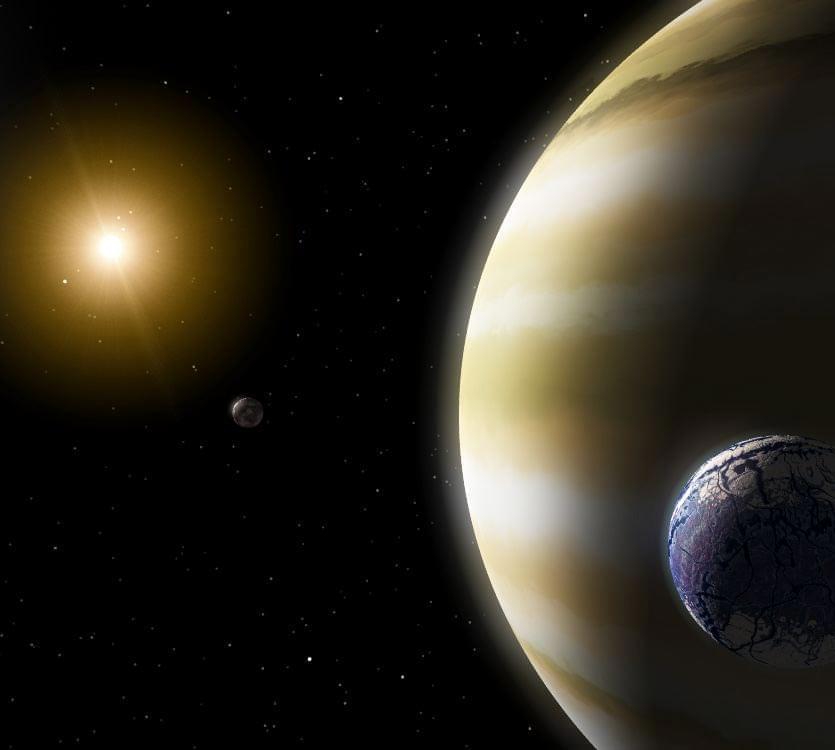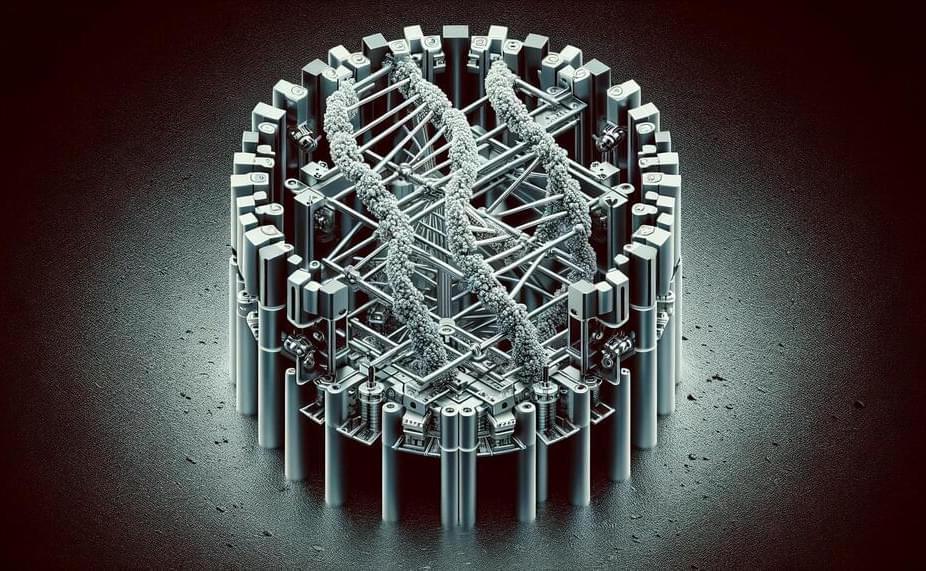This listicle explores four ways that AI and ML are accelerating the biopharmaceutical lifecycle and two big ways that companies are starting to think about their data differently.



A recent study published in Nature Astronomy uses a new method to challenge previous studies regarding the discoveries of the first exomoons around two exoplanets, Kepler-1708b and Kepler-1625b, located approximately 5,436 and 7,534 light-years from Earth, respectively. This study was conducted by researchers at the Max Planck Institute for Solar System Research and the Sonnenberg Observatory and holds the potential to develop new observational methods in identifying and confirming the existence of exomoons throughout the cosmos.
Artist illustration of an exomoon orbiting a gas giant. (Credit: NASA/JPL-Caltech)
“Exomoons are so far away that we cannot see them directly, even with the most powerful modern telescopes,” said Dr. René Heller, who is an astrophysicist at Max Planck and lead author of the study.

Can amino acids, the key building blocks of life, survive high-speed impacts from a spacecraft orbiting another world? This is what a recent study published in The Proceedings of the National Academy of Sciences (PNAS) hopes to find out as a team of researchers at the University of California San Diego (UCSD) conducted laboratory experiments to see if biosignature molecules identified in the plumes of Saturn’s icy moon, Enceladus, by NASA’s Cassini spacecraft could survive hypervelocity impacts experienced by Cassini passing through the plumes. This study is a first-of-its-kind to investigate how extraterrestrial plumes can be analyzed and holds the potential to help researchers develop more efficient techniques for finding extraterrestrial life beyond Earth.
For the study, the researchers used the custom-built Hypervelocity Ice Grain Impact Mass Spectrometer to investigate if ice grains being shot out of Enceladus’s plumes at 800 mph (400m/s) could have survived after striking Cassinis’ detectors, which were estimated between 4 to 10.9 mi/s (6.5 to 17.5 km/s). For the tests, the team shot water through a needle at a high voltage, which caused it to break down into droplets followed by them entering a vacuum where they freeze, and the team used the spectrometer to measure the results of the grains impacting a microchannel plate detector. The results demonstrated that amino acids within ice grains could survive up to impacts of 2.6 miles per second (4.2 km/s), which the team says could serve as a baseline for sampling such plumes.
“To get an idea of what kind of life may be possible in the solar system, you want to know there hasn’t been a lot of molecular fragmentation in the sampled ice grains, so you can get that fingerprint of whatever it is that makes it a self-contained life form,” said Dr. Robert Continetti, who is a Distinguished Professor of Chemistry and Biochemistry at UCSD and a co-author on the study. “Our work shows that this is possible with the ice plumes of Enceladus.”

Researchers have demonstrated a programmable nano-scale robot, made from a few strands of DNA, that’s capable of grabbing other snippets of DNA, and positioning them together to manufacture new UV-welded nano-machines – including copies of itself.
The robots, according to New Scientist, are created using just four strands of DNA, and measure just 100 nanometers across, so about a thousand of them could squeeze up into a line the width of a human hair.
The team, from New York University, the Ningbo Cixi Institute of Biomechanical Engineering, and The Chinese Academy of Sciences, says the robots surpass previous efforts, which were only able to assemble pieces into two-dimensional shapes. The new bots are able to use “multiple-axis precise folding and positioning” to “access the third dimension and more degrees of freedom.”
In Episode 6 of the Lifespan podcast, Dr. David Sinclair and co-host Matthew LaPlante discuss cosmetic aging and how to improve skin, nails, and hair. They talk about why superficial aging occurs and how external signs of aging are often a reflection of biological age. The latest science behind various beautifying therapies is highlighted, including newer interventions like low-level laser therapy and platelet-rich plasma injections. #DavidSinclair #Longevity #SkinCare T.
In the final episode of this season, Dr. David Sinclair and Matthew LaPlante focus on current and near-future technologies relevant to health and aging. In addition to discussing the utility of wearable sensors and biological age measurements, they highlight innovative research aimed at reversing biological age. The societal effects of therapies that successfully extend healthspan and/or lifespan are also considered. #DavidSinclair #Longevity #Aging
In this episode, Dr. David Sinclair and co-host Matthew LaPlante discuss why we age. In doing so, they discuss organisms that have extreme longevity, the genes that control aging (mTOR, AMPK, Sirtuins), the role of sirtuin proteins as epigenetic regulators of aging, the process of “ex-differentiation” in which cells begin to lose their identity, and how all of this makes up the “Information Theory of Aging”, and the difference between “biological age” and “chronological age” and how we can measure biological age through DNA methylation clocks. #Aging #DavidSinclair #Longevity
In this week’s episode, Dr. David Sinclair and co-host Matthew LaPlante zero in on drugs and supplements that have been reported to combat aspects of aging. They share the latest experimental and clinical data for NAD boosters (these being NR, NMN, NAD IV drips and shots), resveratrol, fisetin, quercetin, rapamycin, spermidine, metformin, and berberine.
Earlier this week, Google launched its Gemini AI platform that ‘wowed’ the tech world. A video posted on YouTube showcased the new AI model’s capabilities to process and reason with text, images, audio, video, and code. However, it has since come to light that Google staged the hands-on video demonstration of Gemini AI.
Bloomberg reports that Google modified interactions with Gemini AI to create the demonstration video. The video is titled “Hands-on with Gemini: Interacting with Multimodal AI.”
Google admitted in the video’s description: “For the purposes of this demo, latency has been reduced, and Gemini outputs have been shortened for brevity.” In other words, the model’s response time takes much longer than the video showed.
